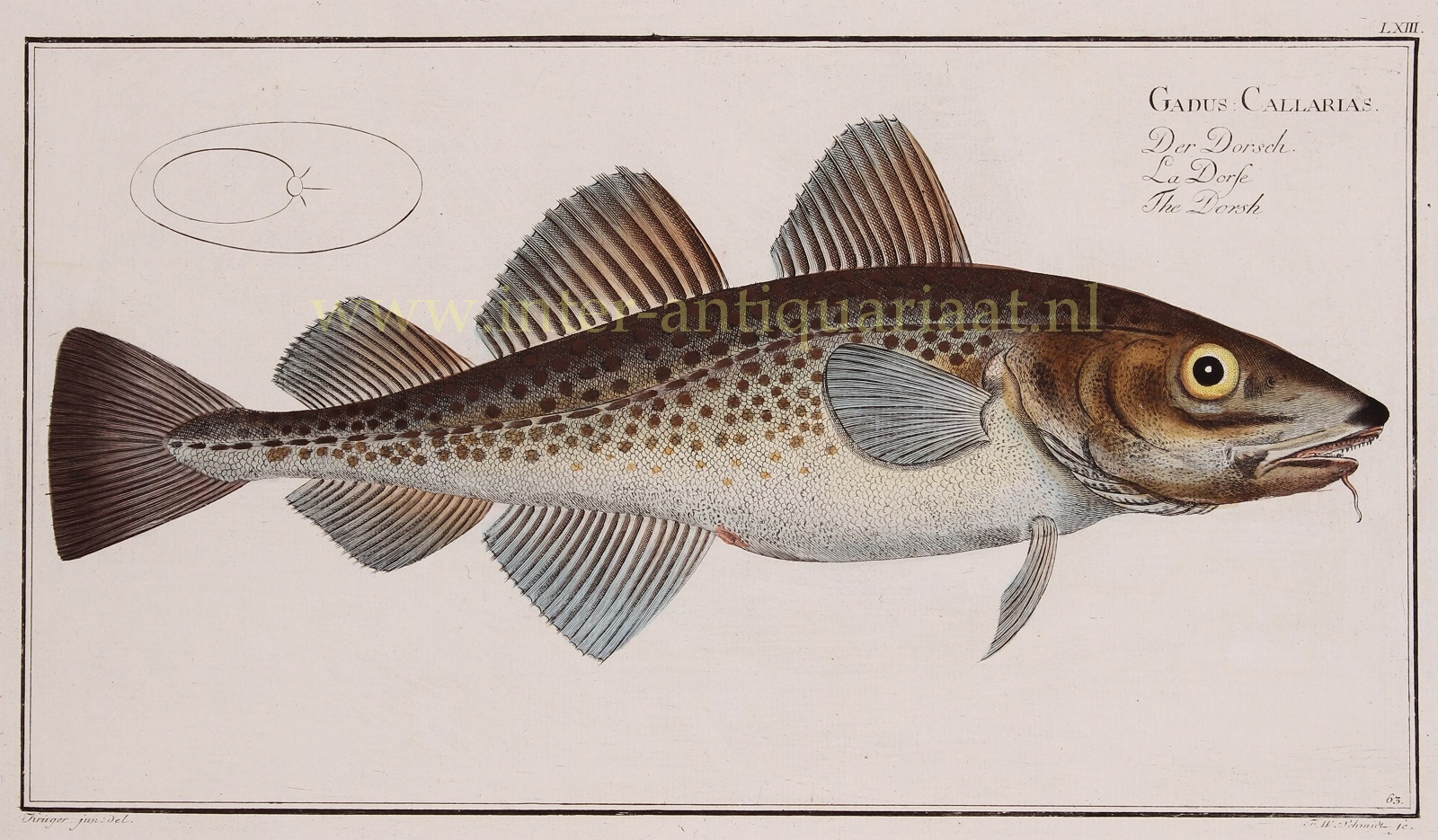BALTIC COD FISH
“Gadus Callarias/Der Dorsch/La Dorse/The Dorsch.” (plate 63), copper engraving made by Ludwig Schmidt after the drawing of Krüger jr, for Markus Elieser Bloch’s “Allgemeine Naturgeschichte der Fische” published in Berlin between 1782 and 1795. With original hand colouring. Size: 19 x 38 cm.
According to Bloch in his Allgemeine Naturgeschichte der Fische, a 12-volume, beautifully illustrated comprehensive work on fishes: “we regularly find this fish in the Baltic Sea, where it perfectly belongs. It goes into the rivers as far as the water is still mixed with the sea water. It is caught in Pomerania near Rügenwalde all year round, but most frequently in June, likewise near Travemünde, Öland, Götaland, Bornholm, not far from Lübeck, in Prussia and in Livonia where it appears in abundance; in Greenland autumn and spring are the best seasons for fishing; further north to the Gulf of Finland, and towards St Petersburg it has almost entirely disappeared. The cod is caught in the bays, on the coasts and in the mouths of the rivers not only with fishing lines, which are usually cast in the evening, but also with rain, and lured by all sorts of small fish. The Greenlanders use the sea scorpion for this in autumn and spring; in winter they cut holes in the ice and lure it with shiny pieces of lead and glass balls. They make their fishing lines from split whalebone or from the fur of the bearded sea calf. This fish has a white, extremely tender meat which is tastier than the meat of all the rest of this species and it is enjoyed by sickly and weak people without problems.
The cod is boiled in salt water and eaten with mustard and brown butter, also with vinegar, citric acid and oil from the Provence; in the same manner it also gives good food when fried. With the Icelanders it is salted, dried and called Titteling.”
Bloch’s labour on the “Allgemeine Naturgeschichte der Fische” occupied a considerable portion of his life, and is considered to have laid the foundations of the science of ichthyology. The publication was encouraged by a large subscription, and it passed rapidly through five editions in German and in French. Bloch made little or no alteration in the systematic arrangement of Peter Artedi and Carl Linnaeus, although he was disposed to introduce into the classification some modifications depending on the structure of the gills. To the number of genera before established, he found it necessary to add nineteen new ones, and he described 276 species new to science, many of them inhabitants of the remotest parts of the ocean, and by the brilliancy of their colours, or the singularity of their forms, as much objects of popular admiration as of scientific curiosity.
Bloch is considered the most important ichthyologist of the 18th century.
Price: Euro 350,-


